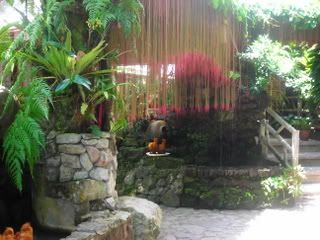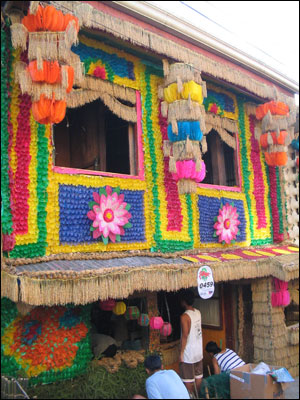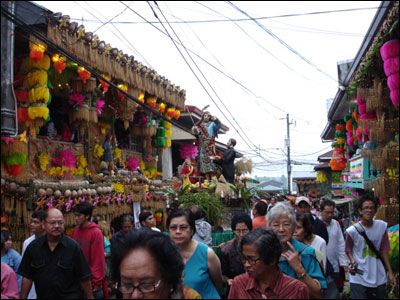 This one of tayabas greate heritage bridge and it's not to far.
This one of tayabas greate heritage bridge and it's not to far. 
 |
|
| Product Description |
| Lambanog is a coconut liquor obtained by distilling naturally fermented coconut sap from the unopened flower of the coconut tree and the end result is a strong and potent drink consolidated into a 40% and 45% alcohol/vol. |
| Product Lines |
| Processed Food under the Beverage subsector :Plain and flavored lambanog (bubble gum, cinnamon, coffee, blueberry, strawberry etc.) |
| Product History |
| In 1928, the parents of Dona Josefita Alandy of Tayabas, Quezon pioneered the establishment of a lambanog distillery as a family enterprise. This entrepreneurial initiative was handed down to the next generation. Lambanog then became commonly known in Tayabas as "Alak Fita" of the Alandy family. The family enterprise became profitable. And today, Joselito Mallari, the grand son of Dona Josefita manages the distillery known as Mallari Distillery. |
Casa Comunidad

The town’s old tribunal is a famous landmark in Tayabas. First built by Gobernadorcillo Francisco Lopez in 1776 with makeshift materials, it was made into a grand edifice in 1831 by then Gobernadorcillo Don Diego Enriquez. The structure was declared a National Historical Landmark in 1978.

It was in this tribunal where Apolonio de la Cruz known as Hermano Pule was sentence to death by firing squad in 1841 for leading the first major revolt in the country, based on religious freedom. Hermano Pule founded the brotherhood Cofradia de San Jose that excluded the Spanish as members. Spanish religious authorities condemned the brotherhood for heresy.

The tribunal houses some function rooms, a library and a museum. Interesting displays in the museum are the old blocks stone shaped for a specific function like the stone press and crosses.

The stone press was used to flatten pandan to make banig. The grass is laid on the curved stone bed and flattened with repeated motion of the stone press. Another is a high-relief stone crosses used a “pwesto” for prayers during Santacruzan.


Palaisdaan, Tayabas
If your Hungry from the trip jsu go at Palaisdaan for lunch. This is locatedbetween Lucban and the town proper of Tayabas. The restaurant serves native cuisine with the special touch of Quezon, the gata (coconut milksauce), in some of its popular dishes.
We enter the restaurant through an arch where a veil of pink-tasseled vines cascade down to almost eye-level.


Take a trip back to Quezon with me as I go down memory lane to a piece of Eden where my parents birthday. I am reminded about it at this time because they were married the day after New Year.
When we were scouting for a venue for the golden event, we checked out this resort right outside the town of Tayabas. It was my first time to visit. And it was love at first sight.
I was enchanted by Graceland Estates and Country Club the moment we passed through their imposing gates.


This the church in tayabas if you want to visit.
Noticeable are gardens and grottos surrounding the church. The old stone wall fence called the quince-quince is still visible. The venerated image of San Isidro Labrador is enshrined here and it feast popularly known as the Pahiyas is celebrated every 15th of May.
Minor Basilica de San Miguel Archangel


A National Cultural Treasure, Minor Basilica de San Miguel Archangel in Tayabas is one of the best preserved and most exquisitely decorated church in the province.

The 103-meter long basilica is touted as the longest Spanish colonial church in the country. It was first built by the Franciscans in 1585 hence, one of the oldest colonial structures. Repaired followed in 1590 lead by San Pedro Bautista then it was changed to brick in 1600. it was destroyed by an earthquake in 1743 and later rebuilt and enlarged in 1856 by adding a transept and a cupola.


Contained in its bell tower is an eighteenth century clock (it is said to be the only one of its kind in the country) that chimes every thirty minutes. It was into a Minor Basilica in 1988. The interior, a good example of Neo-Classical style, has an antique organ, seven altars done in the Neo-Classical style.The adjacent convent was used as a Japanese garrison during the World War II.
